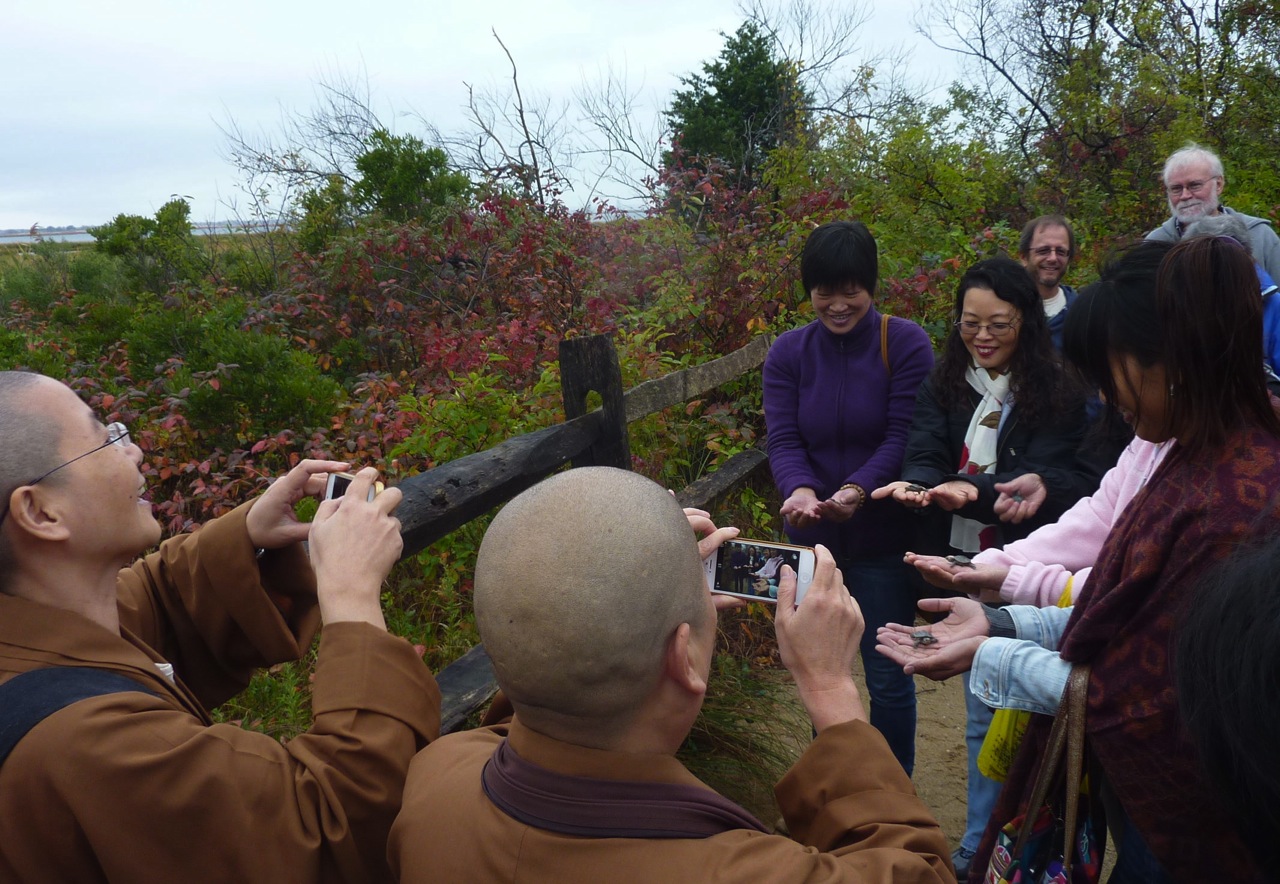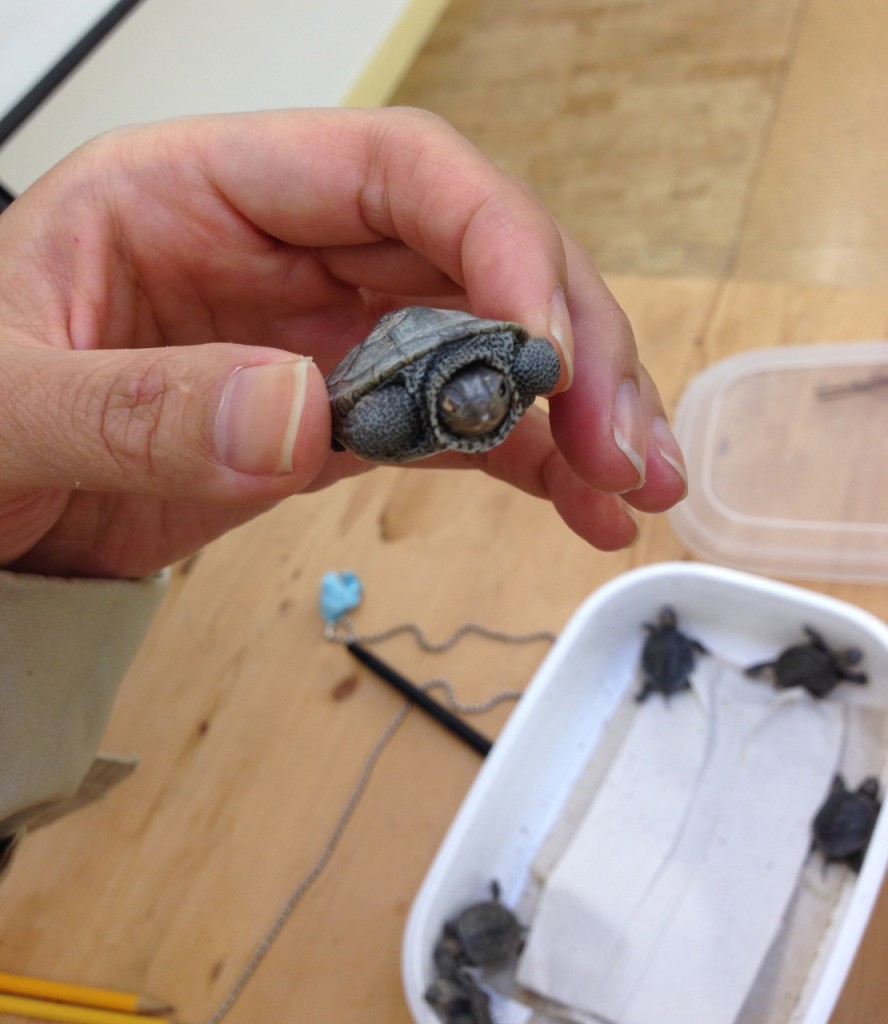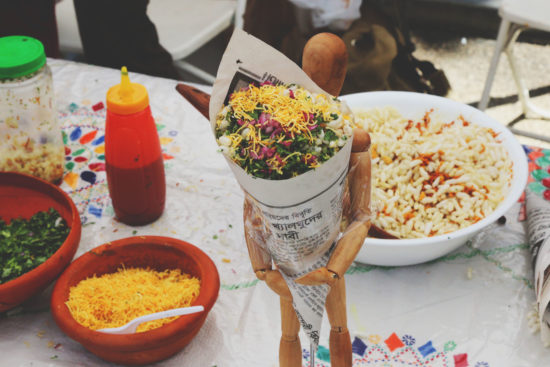Buddhist “mercy releases” have long set animals free in ways that may harm them. Parks and animal protection organizations are working to make it better.

October 28, 2014
At the Ou Jiang Supermarket on Main Street in Queens, live turtles, crabs, lobsters, and frogs sit in plastic tubs, awaiting their fate. Many of these creatures will travel in plastic bags to kitchens across Flushing, Long Island, and beyond, to be chopped and fried and stewed into dinner.
The turtles might get cooked into medicinal soups for a sick child, or an elderly aunt. But destiny could have a surprise in store. One lucky turtle might get bought by a Chinese Buddhist, and released into nearby Willow or Meadow Lake, or one of New York City’s many other bodies of water. But, that freedom could come with a price.
When strange animals are found in NYC parks or waterways, people often assume it’s an abandoned pet. However, sometimes it’s the work of a well-intentioned Buddhist, practicing something called “mercy release” or “release life” (fangsheng in Chinese).
Practiced by Chinese and Tibetan Buddhists, the intention is to create good karma by saving a life. In truth, however, the opposite often happens. The animals may be sick or weak after being held in captivity, and die soon after their release. People sometimes release freshwater creatures into salt water, or vice versa. Species from warmer climates freeze to death in New York winters. And the animals wreak havoc on the local ecosystem – especially since they are often non-native species purchased in Asian neighborhoods.
…the intention is to create good karma by saving a life. In truth, however, the opposite often happens.
“Animals released into parks…can potentially be destructive to the habitat or carry diseases that negatively impact native wildlife,” said Meghan Lalor, a spokesperson for NYC Department of Parks and Recreation.
Not to mention that releasing animals into city parks is illegal.
The Parks department and animal organizations first became aware of the issue in the 1990s, when all around the city, batches of red-eared sliders, a turtle species from Texas, began turning up in bodies of water.
“They’d be in the oceans, in the fountain at Central Park, in all the wrong places, often times sick or sitting in brackish water,” said Lorri Cramer, director of turtle rehabilitaton at the New York Turtle and Tortoise Society.
If you remember the tiny baby turtles in buckets that seemed to be sold in every shop in Chinatown some years back, those are red-eared sliders. (So are the Teenage Mutant Ninja Turtles, which some blame for the slider craze.) People who buy sliders as pets, then abandon them in parks, have been an ongoing problem for the city. Because of that, and because they can spread salmonella to children, it is now illegal to sell turtles less than four inches long. But large clusters of them were turning up, recalled Cramer, and she eventually traced them back to mercy releases.
“The pond at Central Park is almost all red-eared sliders now, but it used to be mostly native species,” said Cramer. Native painted turtles, spotted turtles, and musk turtles have been killed or forced out by the larger and more aggressive sliders. “The only ones that can really hold their own against red-eared sliders are the snapping turtles,” said Cramer.
Though turtles are especially valued for their long lifespan – many live longer than humans – they are not the only animals used in mercy releases. Some years back, several dozen doves purchased in Manhattan Chinatown were released in a ceremony in Westchester; when the monks came out the next day, they found the birds dead on the ground. Crabs have been released at Coney Island and immediately snatched up by seagulls. A type of bullfrog often sold in Asian markets has been found to spread a deadly fungus that scientists say is wiping out other frog species.
And the New York Times reported in 2005 that snakehead fish, an especially voracious invasive species from Asia, had been found in Meadow Lake in Flushing Meadows Corona Park. No connection has been drawn between snakehead fish and mercy release, but they first inspired alarm – and a federal ban – when they were discovered in 2002 in an area of Maryland with a large Asian community.
Cramer, the Humane Society, local temples, and others interested in the issue have spent the last several years seeking a better way to practice mercy release.
Several dozen doves purchased in Manhattan Chinatown were released in Westchester; the next day, the monks found the birds dead on the ground.
“We used to just tell people not to do this, but that didn’t work,” said Patrick Kwan, formerly of The Humane Society of the United States, who grew up in Manhattan Chinatown and is Buddhist. (He now works for the Chinatown Business Improvement District.) Next, they tried encouraging people to collect money for spaying and neutering instead, which can also save animal lives. However, this didn’t strike quite the same emotional chord as personally releasing a live animal into the wild. Plus, there are ritualistic aspects of the practice, such as chanting and blessing the animals, that are important to followers.
Finally, a solution has been found that, so far, is working. First, the Humane Society is working with Buddhist leaders to educate their community and let them know that releasing wild animals is illegal under New York law. And second, professional wildlife rehabilitators, such as the New York Turtle and Tortoise Society and the Wild Bird Fund, have been collaborating with Buddhist temples to let congregants take part in animal releases that account for the well-being of the animal and the environment. The Venerable Benkong, an elder monk at the Grace Gratitude Buddhist Temple in Chinatown, has dubbed the updated ritual “compassionate release life.”
On a rainy Saturday in October, a Hofstra University biologist named Russell Burke, a few members of the New York Turtle & Tortoise Society, and about 10 or so nuns and congregants from Grace Gratitude Buddhist Temple gathered at the Jamaica Bay Wildlife Refuge for one such release.

“They’re so beautiful,” whispered one of the refuge employees, as the nuns swept in with shaved heads and flowing robes. The nuns set down their backpacks, pulled out digital SLRs, and began excitedly snapping photos. We were directed to a conference room with a Tupperware container sitting on a table. In it were six diamondback terrapins, just a few weeks old. Each was smaller than a silver dollar, and kept trying to crawl up the plastic sides of the container. Occasionally, one would lose its balance, wave its front legs in circles, then fall over on its back.
Dr. Burke gave a PowerPoint lecture on his work, focused on diamondback terrapins. Their eggs are a popular snack for raccoons, and Dr. Burke is working to increase their population. This involves protecting their nests from raccoons. He also bred specimens in captivity and released them into Jamaica Bay. That was the case for the six tiny turtles present. He also discussed other problems the turtles face, such as swimming into crab traps and drowning, and hunting. Burke hoped that would eventually change, but said it would take awhile. “The state works like a turtle,” said Burke.
During a question and answer session, one of the nuns asked, “Are you often bitten by turtles?” Everyone chuckled.
Another nun asked how many turtles were available for release that day.
“Just six,” said Dr. Burke.
“But they’re very special,” chimed in Cramer.
After the talk, Dr. Burke brought the Tupperware container out to the atrium, and set it in the middle of the floor. The congregants put on robes, and they and the nuns gathered around the container. This was the second time the temple had been invited to do a compassionate release at the refuge. They’d also done releases in Central Park and in Westchester. Usually, ceremonies are held outside, but this day, concessions were made for the rain.
I settled on the floor to watch, as did some biologists, refuge volunteers, and the members of the turtle and tortoise society. The Buddhists sang and chanted for about fifteen minutes. The Venerable Jingyi, the abbess of the temple, chimed along on a silver bell, while one of the nuns tapped a wooden block. Then Jingyi took out a paper cup with water in it. She blessed the water, then dipped a leaf into it and sprinkled it over the turtles. Finally, after a last bout of chanting, it was time to release the turtles.
So far, Grace Gratitude is the only temple Cramer and the society have worked with. The temple also participated in a bird release with the Wild Bird Fund in Central Park last November. “It’s good to have a variety of animals to release,” said Cramer. “Turtles are good for summer but in winter they’re hibernating.”
On both visits, Grace Gratitude made a generous donation to the Jamaica Bay Wildlife Refuge. The Humane Society also sent a group of 40 Buddhists from several Brooklyn and Manhattan temples to the Catskill Animal Sanctuary in 2011, and said that resulted in donations as well. Burke hoped that people would begin volunteering at the refuge as well.
“The state works like a turtle.”
Cramer said she wanted to expand their efforts to other temples, cities, and even countries, though Burke said that the city Parks department is ambivalent about the effort, and approaching it cautiously. “They don’t want to give people the impression that sanctuaries are a place to release animals,” said Burke. “So they’re treating this on a year by year basis. We got special permission to release these turtles because it’s their native home.”
Mercy release is such a prevalent practice in the US, Canada, and Asia that an entire commercial industry has sprung up around it, to trap and sell animals to temples, said Iris Ho, Wildlife Program Manager for the Humane Society International, by phone. In 2009, the Humane Society sponsored a survey by the Environment and Animal Society of Taiwan (EAST) and found that in Taiwan alone – “such a small place” – 200 million animals are used every year in mercy release. “If we combine that with so many places around the world that are doing this, it could be billions of animals that we’re talking about,” said Ho.
Ho elaborated on ways the industrialization of the practice is harmful to animals. Trappers put out nets for birds, and don’t return for a week, by which time many caught birds are already dead. They pack animals tightly into cages for transport, and many die or get sick. “It’s a practice that contradicts the Buddhist teaching of compassion for animals,” said Ho.

After the ceremony, everyone grabbed an umbrella from a bucket by the door and trooped out towards the water. We reached a break in the trail, from which we could see the water’s edge, and stopped. The lid was lifted off the Tupperware, and the nuns readied their cameras. The congregants each took a tiny turtle and held it up with a smile. After a flurry of photo-taking, they squatted down, with the rest of us close behind, craning our necks for a better look. The congregants gently set the turtles on the ground, and they immediately scurried towards the water.
“Wow, they move so fast!” exclaimed one of the congregants, a middle-aged woman in a black windbreaker, in Chinese.
“Of course they move fast,” said the young nun beside her. “They’re returning to nature.”



